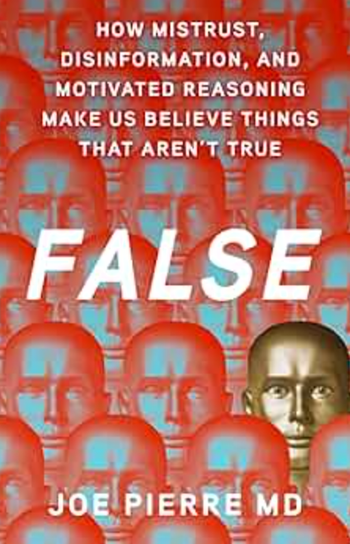
- Psychiatric Times Vol 36, Issue 6
- Volume 36
- Issue 6
Serial Pleasures
The pleasures of a story unfolded serially are ancient and ubiquitous.
Dr Greenberg practices psychiatry in Manhattan, New York. He continues to publish frequently on film, media, and popular culture. For many years, his cinema column appeared in Psychiatric Times. He has appeared frequently on national and international network and cable television programs including Good Morning America, Today, CBS Evening and Sunday News, PBS, CNN, Showtime, and BBC-TV. Please address communications to Dr Greenberg at HRGSMES@AOL.COM.
Greenberg On the Arts
The pleasures of a story unfolded serially are ancient and ubiquitous. Cliffhangers enhance their power. Imagine a Cromagnon tribe’s ace yarn spinner suddenly breaking off his tale before a circle of enraptured listeners. He announces the hour is late, the fire burnt down, all the Neolithic hooch drained.
So-they’ll have to wait a moon or two for the conclusion. That primal “to be continued” must have been sorely frustrating. But one conceives that it also conjured up a bevy of exciting fantasies about mighty Og’s slaying the monstrous mammoth, rescuing future Mrs Og to share his man cave.
The serial format has ranged across every genre in every time and place-embracing epic, saga, Dickens’s masterpieces (published in monthly installments), banana-peel comedy, and banal soap operas. For decades, prime time network TV thrived on the serial format-pitching series at every brow (mostly low- and mid-).
In the wake of popular BBC/Masterpiece Theater series-from I, Claudius (1976) to Downton Abbey (2016)-major cable networks like HBO and Showtime, followed by new kids on the block like Netflix and Amazon, have increasingly turned to serial programming. As always, industry financial considerations figured prominently in the move.
Compared with big network series, cable fare generally has lower production costs and is more easily cancelled. Producers’ fervent hope is for that Big Box Office Kahuna, when avid fans cry out for more, and multiple seasons generate staggering profit: Game of Thrones (2011, et seq), an obvious case in point.
We are lucky to be living through a time of unprecedented cable excellence. A cornucopia of American and international series are hallmarked by riveting plots, magnificent casts, and exquisitely realized milieus-whether Victorian stately homes or prohibition-era Atlantic City. Sadly, the field is already becoming crowded with flimsier stuff. So, enjoy the good times while they last!
The following short takes on three favorite series cover widely different subjects, are notable for accomplished technical craft, depth of characterization, and psychological resonances.
Shtisl
From Israel comes Shtisl, a nuanced depiction of a fiercely patriarchal Jerusalem Hasidic community. Its traditions mandated to be unchanged until the Messiah’s advent. Marriages, commonly arranged after two dates, yield a throng of children to continue their parents’ pious practice. Meanwhile the community has to deal with the lure of the secular world as well as the recurrent doctrinal disputes with other ultra-orthodox groups.
The protagonist is Rabbi Shiloh Shtisl, teacher and later principal of a children’s Talmud Torah school. His avuncular presence reminds one of Sholom Aleichem’s tender hearted Tevyah-until he opens mouth, and out pops anti-Tevyah.
In Dov Glickman’s magisterially truculent performance, Shtisl’s dismissive jeremiads are provoked by the least opposition to his iron will. The characters rarely speak about their inner lives. Potentially troublesome motives are repressed or consciously disavowed. Shtisl is even more alixithymic on this score than others.
He is infuriated when a matchmaker’s report deems him merely an “eater and smoker”-he’s both, big time-because he conceives himself a major educator. He never cops to shamelessly manipulating his children if they threaten to stray from obedience to the Divine Will-as he construes It.
He wheedled one son, a promising singer, to sacrifice his gift for the Talmudic study house. Another daughter fled his domination to marry a Lubavitcher Hasid. Shtisl views the Lubavitch as Satan’s spawn.
In the second season one discovers this petty tyrant possesses a Tevyah soft side after all. It’s evident in his abiding affection for his students, the ancient mother who knows him like a book, and his deceased wife Dvora. She strove to nurture the better angels of his nature behind the scenes-a familiar strategy in similar rigorous patriarchies. He finally confronts his desolating grief in the series’ unsettling conclusion.
Shtisl’s deepest wrath- and warmth-is compelled by his youngest son, the dreamy Akivah who lives with him in harmonious disharmony. Akivah is tagged with the dreaded sobriquet of “screw-up” for repeatedly rejecting desirable matches and a settled life. Instead he pursues a remarkable artistic talent that is anathema to his father.
I admire Shtisl for its scrupulously unjudgmental portrayal of a culture too facilely condemned by the political correctniks. The series refuses convenient resolutions. The construction of Hasidic custom is amply recognized; but one also appreciates the nurturing and support offered by this holy community to its people.
The price may seem heavy, but the cost of alienation spurred by assimilation is also intimated. According to Hasidic perception, the latter proceeds inevitably from the broken covenant of secular Judaism with an omnipotently loving God.
Call My Agent
French cinema has always featured a unique brand of hectic comedy, with madcap characters, convoluted plots, ratatat dialogue, and racy sex. Its conventions are squarely grounded in the popular bedroom farces of the 19th century Parisian stage. French movie farce was congenially influenced by Hollywood screwball comedies of the thirties and forties.
That unique Gallic humor continued to flourish abroad. But with the exception of a few pictures like the original La Cage Aux Folles (1978), it hasn’t appeared in American theaters except in borrowed Anglophone robes-eg, the Pink Panther Clouseau series.
Call My Agent (2015) recaptures the genre’s pixilated essence. The aging chief of ASK, a high-octane Parisian talent agency, drops dead on his first and only vacation. His partners are left to fend and claw amongst themselves, while nurturing a narcissistic clientele clamoring to have every loopy whim instantly gratified.
Actual stars of French screen and stage sweeten the kitty-inter alia Isabelle Huppert, Natalie Baye, and Francois Bertrand. Piquantly, one doesn’t know if they are playing or playing at playing themselves.
At the series’ whimsical heart are the frenetic, funny, and in the end poignant relationships between the survivors as they jockey for pelf and power. The adulterous Mathias, ever slimily scheming to take over ASK; Andrea, a brash lesbian heartbreaker; the chronically discombobulated Gabriel, brilliant manipulator on the job, a total wreck in his amours; and Lilian, oldest and wisest of the group, who thrived during the glory days of the fifties (her dog is named Jean Gabin). She insists on being called an “impresario.”
A textbook on systems theory could be written about the klatch’s wacky interactions over three hilarious seasons. Suffice it to say that for all their shameless backstabbing and ceaseless client stealing, the agents grow even more intimately bonded by their overwhelming love of cinema and the idiosyncratic high-wire world of its creation. Francois Truffault treasured this lunatic ambience; memorializing it in his triumphant valentine to filmmaking, Day for Night (1973).
True Detective
The film industry prefers lensing spectacular diagnoses like multiple personality disorder in aid of reaping bigger box office. By this token movies about Alzheimer disease tend to favor the later dramatic aspects over the less exciting but no less harrowing psychological erosion of early to mid-stage dementing illness.
The third season (2019) of the quirky True Detective series addresses these phases with clinical accuracy in the context of an unusually intricate deft narrative. Wayne Hays (a deeply moving performance by Mahershala Ali) was a dyslexic loner from an impoverished rural Arkansas background. The Army recognized his keen intelligence and hunting skills. In Vietnam, he served as a solo deep reconnaissance tracker.
After being discharged he returns to a local Arkansas police force where he proves to be a formidable detective-and an off-putting loner, except for his unlikely friendship with his white partner, Roland West (an affecting Stephen Dorff).
West, himself a gifted sleuth, is drawn to Hays despite the latter’s grinding sullenness and occasional wrongheaded accusations of racism. Hays also becomes captivated by Marian, a brilliant ironic teacher, who perceives the wounded and gentle soul hidden by Hays’ bitter schizoid carapace.
The partners investigate the apparent ritual murder of a boy and disappearance of his older sister. Over nearly 30 years a serpentine plot unwinds in parallel timelines at three levels interpolated by adroit flashbacks.
Hays’s subsequent marriage to Marian seems successful on the surface, but there were troubling undercurrents from the start. Fault lines are exposed when Marion writes a best seller on the case. Hays fears it will compromise the investigation but harbors an inchoate certainty that Marian believes that he’s her intellectual and social inferior, indeed has always thought so.
Hays grows disaffected by the departments’ delaying tactics and pursues other crimes without West. His reputation fades. Then, a decade later new leads involving a prominent citizen prompt West to ask Hays back aboard. Eventually the career minded West goes along with allowing that the crime be pinned on a dead suspect-a PTSD vet who could have been Hays in a sicker incarnation.
Hays angrily breaks off with West; spends his remaining career in dead-end PR office work. After Marian dies, Hays doggedly refuses to live with his son-also a cop-and languishes in searing solitude. Then, beset with early dementia, Hays realizes that his last measure of psychic wholeness can only be achieved by finally solving the case. He’s helped by Marian’s notes-he conjures her ghostly presence during bad moments-and his renewed friendship with West, still an inveterate bachelor.
In the end he accepts his children and West’s loving support. The case is resolved on an utterly unexpected note, and Hays can now forge whatever wholesome life remains to him before terminal darkness descends. This is the stuff of highest tragedy, invoking Lear’s raging lunatic exile from his authentic self, his rebirth into sanity, and redemption. You don’t often find better than this on or off the small screen.
Afterthoughts on bingeing
Tandem gobbling of favorite shows sans commercials became available during the TiVo days of yore. Bingeing escalated with improved viewing technology and the proliferation of cable networks and series. In fact, the phenomenon has been around for millennia. With the advent of the written or printed word one didn’t have to delay finding how Og’s adventures turned out.
Papyrus or paper, scroll or book made it possible for the devotee to read on-and on-through successive cliffhangers until one reached the contented, if sleep deprived, “THE END.”
In an elegant essay on detective fiction, analyst Leo Bellak theorized that readers experienced a rush of “closure satisfaction” when the omniscient sleuth solves the crime, putting one’s unsettled anxiety definitively to rest. I expect that a Roman senator, unrolling the last scroll of Petronius’ Satyricon in the wee hours, and today’s 5 am boob-tube binger have savored the same exhausted gratification.
But I must wonder: by yielding to that overwhelming yen for an end, now so easily obtained, does the contemporary binger sacrifice that peculiar pleasure-that ineluctably potent frisson-when a take is suspended in mid-air-“to be continued.”
Articles in this issue
over 6 years ago
Overcoming Treatment Resistance: Can Pharmacogenetics Help?over 6 years ago
Treating Patients With Comorbid Anxiety and Diabetes Mellitusover 6 years ago
Chatbots: What Are They and Why Care?over 6 years ago
The FDA on ECT: Supporting a Vital Treatmentover 6 years ago
Strategies to Facilitate a Positive Clinical Encounterover 6 years ago
Medication-Assisted Treatment on a Budget: Two You Should Knowover 6 years ago
Psychiatric Pharmacogenomic Testing: The Evidence BaseNewsletter
Receive trusted psychiatric news, expert analysis, and clinical insights — subscribe today to support your practice and your patients.















